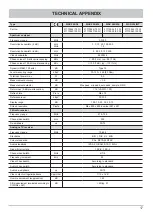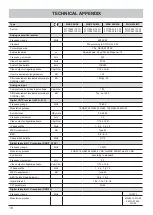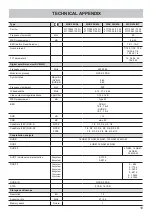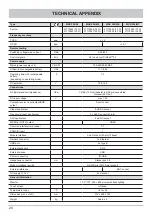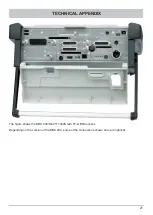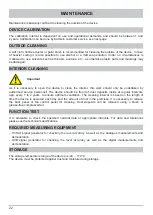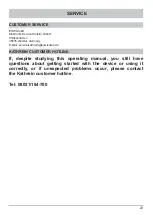
12
OPERATION
SELECTION OF THE CHANNEL TO BE MEASURED
Now the required measuring channel can be selected:
In principle there are various ways you can select the channel
1.
Selection of a programme using the programme names
1.1. Select the required channel table using the “Chan.Tab” button.
1.2. The required programme name can be entered in the “Prog.Name” fi eld (here the programme
name is automatically completed).
2.
Selection of the programme via the channel number
2.1. Select the required channel table using the “Chan.Tab” button.
2.2. The number for the required programme position can be entered using “Prog.Number”.
3.
Selection of a programme using the channel
3.1. Select the required channel table using the “Chan.Tab” button.
3.2. The required channel can be selected in the “Channel” selection.
4.
Selection of a programme using the frequency
4.1 Select the required channel table using the “Chan.Tab” button.
4.2 The required frequency is entered in the “Frequency” fi eld.
4.3 The frequency entry is automatically corrected to the correct video carrier frequency or channel
mid-frequency. You can fi ne tune the frequency using the “<” and “>” buttons.
If the “Couple Chan” function on the “EXTEND” menu is set to “TO STAND.”, all further settings
(Standard, Mapping, Symbol Rate etc.) are made automatically.
If you want to set these parameters individually, you must set the “Couple Chan” function on the
“EXTEND” menu to “NOT COUP.”.
SELECTION OF THE MEASUREMENT
To make a measurement after completing the setting of the channel, the related measuring instrument
can be opened using the
hard key and subsequent selection via the onscreen menu.
The following measurements and measuring instruments can be selected:
Sub-menu for settings DiSEqC
TM
, SCIF, etc.
Spectrum analyser
Constellation analyser
Pulse / refl ection measurement (only for DVB-T)
Read MPEG stream, MPEG monitor
Storage oscilloscope
Summary measurement, simultaneous measurement of RF level, S/N, MER, BER, HUM and
video voltage
TV picture, videotext
Setting for the various outputs (ASI, TS parallel, video)

















